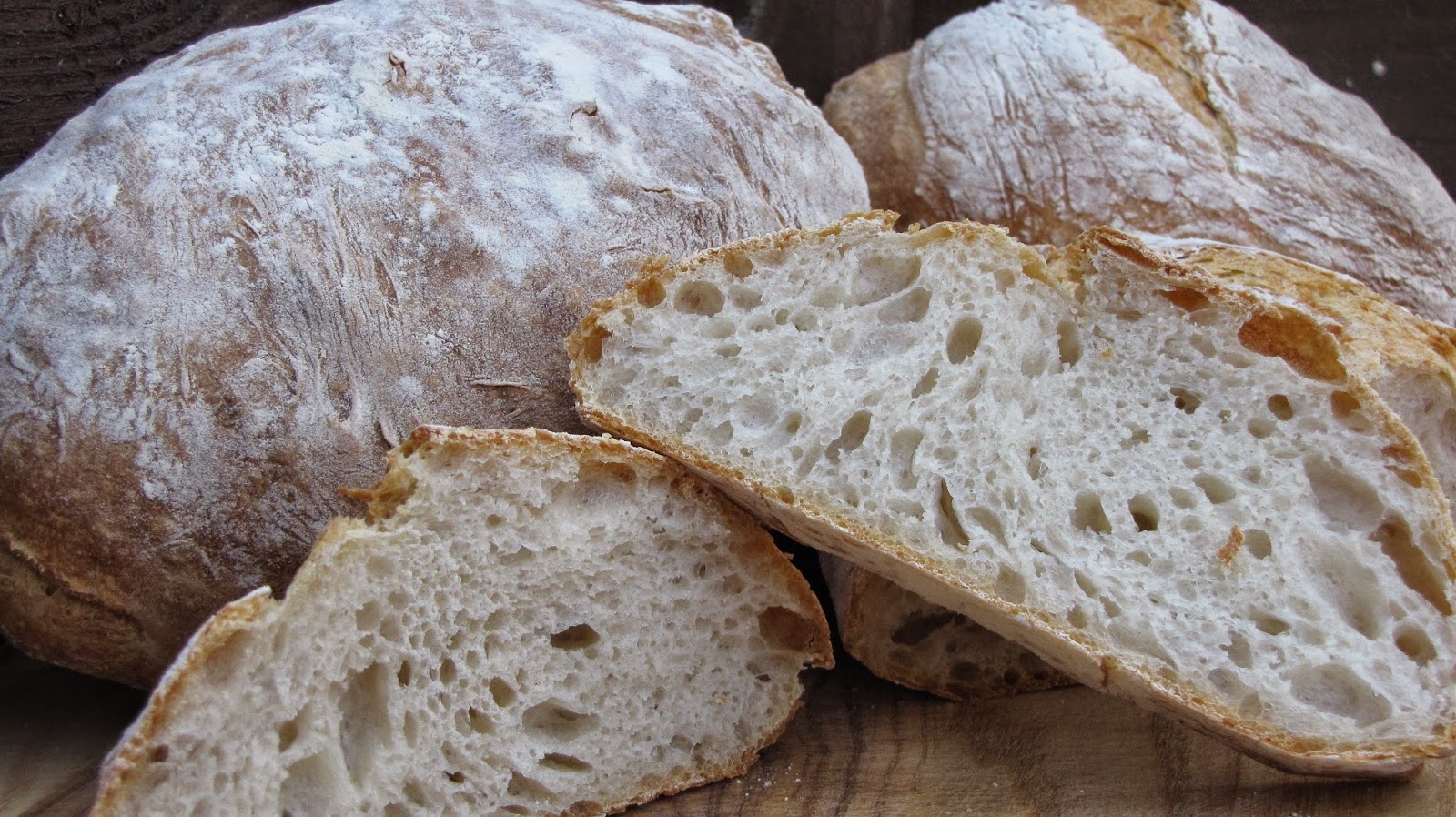Imagine the
scene….
A 19th
century Italian olive farmer in Puglia
A bread steeped in
Italian tradition going back centuries, recipes passed down from Nonna to Mama
through many generations, a taste of Italy unchanged for millennia...
Well, you
can imagine all you want, but that’s nothing like the truth!
Ciabbatta is
a 1980s child! The same age as Prince William to be precise.
That’s
right. 1982. Bakers in Italy
Naming it after
the Italian word for ‘slipper’ due to its shape, a legend that has adorned
delis and snack bars the world over was born.
 |
| Arnaldo Cavallari |
And it’s
good too.
Versions
vary around Italy Tuscany
 It’s designed
to be sliced horizontally along the loaf and not down like a traditional slice,
the perfect sandwich shape.
It’s designed
to be sliced horizontally along the loaf and not down like a traditional slice,
the perfect sandwich shape. |
| Mixer with dough hook. |
It’s made from a very wet dough, Cavallari says it should be an 80% hydration or 800ml of liquid for every 1000g of flour.
That’s
wet!
Difficult to knead too, so a mixer with a dough hook is really required
here.
It’s also a
bread which needs to be started the day before as it uses a pre - ferment
called a ‘biga’ as a starter. This is
nothing too complicated, you simply mix together yeast, flour and water into a
sloppy dough, cover and leave at room temperature overnight. I usually make mine on a Friday or Saturday night if I know I can bake at lunchtime the next day.
In the morning you have what looks like a
bubbling liquid on the surface but is actually quite stable and elastic when
you dive into it.
The shaping
of the final loaf is tricky in the home environment. Pro bakers make it look very easy, flipping
the dough from proving boards to baking trays with ease. You need to make sure that you flour your
surface well and use a decent dough cutter.
Try to get your pieces as even in size and shape as possible. Don’t worry if they look a little flat at the
shaping stage, they will puff up in the oven I promise!
Here I must credit Ballymaloe Cookery School for first introducing me to the process of how to make ciabatta and for this recipe.
Here I must credit Ballymaloe Cookery School for first introducing me to the process of how to make ciabatta and for this recipe.
Biga
Ingredients
7 g fresh yeast
400 ml warm water
500g strong white bread flour
In a large,
non metallic, mixing bowl crumble the fresh yeast and pour on 50ml of the
water, blood temperature is best. Allow this to sit for about 10
minutes until it turns creamy and a bit frothy. If you want to use dried yeast then just halve the quantity of yeast.
Then add in
the rest of the water and the flour and mix really well with a wooden
spoon. It should come together into a
gloopy, thick, pasty dough. Cover this
with cling film and allow to sit at room temperature overnight or for up to 24
hours.
 |
| My biga |
When ready
the biga should have about doubled in size and have a beery fermented smell.
The
Ciabatta
Ingredients
7g fresh yeast
400ml warm water
1
tablespoon olive oil
550g biga
500g strong white bread flour
15g salt
Take the
bowl of your mixer and crumble the yeast into the bottom. Add on 100ml of the warm water and let sit
for ten minutes. If using dried yeast, halve the quantity of yeast.
N.B. You can replace the 100ml of water with milk here and it becomes Ciabatta Al Latte.
N.B. You can replace the 100ml of water with milk here and it becomes Ciabatta Al Latte.
Add in the
oil, remaining water and the biga. The
remaining biga can be put into a jar and mixed in with your next batch for
extra flavour. Best to keep it in the
fridge.
Blend with
the paddle beater until it is mixed through.
Then add the sieved flour and salt and mix for a further 10
minutes.
Change the
paddle to the dough hook. Beat for about
20 – 25 minutes until it comes away clean from the side of the bowl and is a
firm yet sticky stringy mass. Get it mixing at the highest speed you can. It will
still be very wet at this stage.
Remove this
to a big oiled bowl which is large enough so that the dough can expand. Cover and leave at room
temperature until it has doubled in size.
This should be between one and two hours depending on the conditions in your kitchen.
Flour your
work surface well. The dough is very
sticky.
N.B. Do not
knock back the dough!
Gently stretch and shape it to make an even slightly rectangular shape. Using your dough cutter, cut into even size pieces and fold over on to itself to create that 'slipper' form. This amount of dough makes 4 big loaves or 6 - 8 smaller ones depending on what you want.
Flour your baking trays. I'm actually using fine polenta at the moment which brings a lovely final crunch to the finished loaf.
Gently get your loaves onto the tray, cover and leave to rest for about 40 - 45 minutes.
Pre - heat your oven 220 ° C conventional / 200 ° C fan.
When the loaves have rested for 40 - 45 minutes, dust with more flour and put them in the oven to bake for 20 - 25 minutes.
When done they should feel very light for their size and sound hollow when tapped.
Transfer to a cooling rack and resist the temptation to eat until cool.
 |




No comments:
Post a Comment